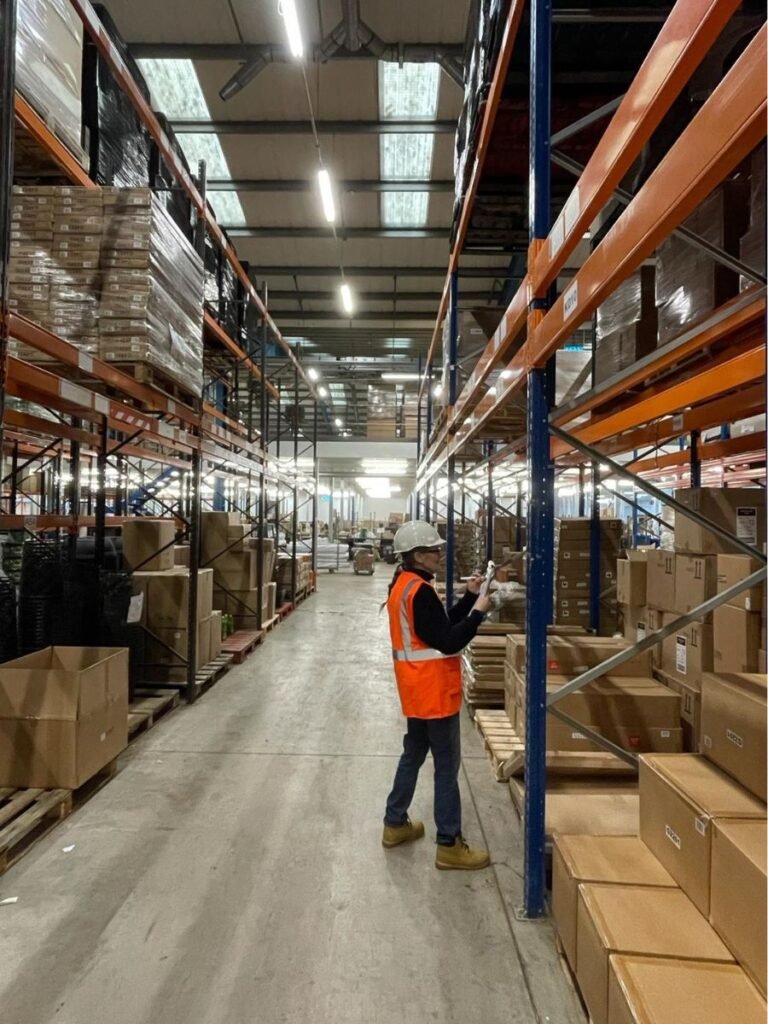Rack Inspections Best for Business 2024
Rack Inspections, also known as Rack Safety Inspections, are essential for maintaining a smooth and efficient warehouse. Surprised to see how slender steel columns can support such high stacks and heavy palletized goods. Hardened steel racks are incredibly strong, but they can become fragile when damaged by forklift collisions, overloaded with excess weight, or rust eroded over time. When these issues occur, a catastrophe can happen unexpectedly. For more information on rack inspection in Devon.
Across the West Counrty, the team from Clark Mezanines Ltd, led by John Clark, conducts systematic rack inspections in commercial warehouses. The objective is to optimize warehouse operations by ensuring the smooth and safe functioning of storage racks through routine, detailed checks. These inspections are crucial for early risk detection, thereby preventing rack collapses that could result in significant operational disruptions or even casualties. Regular assessments of your storage racks’ stability and the implementation of a maintenance schedule are essential. Keep abreast of the latest safety regulations from health and safety bodies and utilize online checklists for streamlined inspections. A safe warehouse is synonymous with a productive warehouse.
Warehouse owner, investor or senior manager insist on independent inspections
If you’re a warehouse owner, investor, or senior manager, it’s crucial to insist on independent inspections. These inspections provide an unbiased assessment of your warehouse’s safety standards, ensuring that your operations adhere to the highest safety protocols. Remember, a safe warehouse is not just a regulatory requirement, it’s also a key factor in maintaining efficiency and productivity.
Talk to your independent inspector about training your staff. While annual independent inspections are important, your inspector could also train your team to conduct their own monthly and quarterly rack inspections. This process can then be audited by your independent inspector. This way, your staff becomes trained and empowered. At the end of each shift, in addition to cleaning up and tidying the warehouse, they can walk the aisles and check the pallet bays for any damage or overweight pallets.
Rack Safety Risk Management
Starting with a cheack list for your own rack inspection routines:
- Aisle & Bay Number: Specify the exact location of the racking system.
- Rack Condition: Check for any visible signs of damage or wear.
- Alignment of Racks: Ensure that the racks are properly aligned.
- Visible Rust or Corrosion: Check for any signs of rust or corrosion.
- Beams: Examine the beams for any signs of damage.
- Connector Hardware Integrity: Verify the integrity of the connector hardware.
- Load Capacity Guidelines: Adhere to the load capacity guidelines.
- Horizontal and Diagonal Bracings: Check for any signs of damage.
- Front and Rear Base Plates: Inspect for any signs of wear or damage.
- Front and Rear Floor Fixings: Ensure they are secure and undamaged.
- Front and Rear Floor Beams: Check for any signs of damage.
- Level Plates: Ensure they are secure and undamaged
- Front and Rear Safety Locks: Check for any signs of damage.
- Load Notice: Ensure it is visible and accurate.
- Column Guards: Check for any signs of damage
Remember, this is a general checklist and the specifics may vary depending on your warehouse and racking system. Always ensure each inspection is signed and dated by the Person Responsible for Rack Safety (PRRS) and keep on record for future reference. If you notice any serious damage or have concerns, it’s recommended to offload immediately if safe to do so and seek professional advice.
What are some common rack safety issues?
There are several common rack safety issues that warehouses should be aware of:
- Overloading: Overloading can lead to rack collapse, so it’s essential to stick to the specified weight limits for each rack. While hardened steel racks can bear extreme weight, a dent or buckle caused by a forklift collision could result in a collapse, necessitating repair.
- Improper Loading: Improper or unevenly distributed weight can lead to tipping. Loads should be evenly distributed and match the specifications of the beams and the wire decking they rest on¹.
- Damage to the Racking System: Damaged racks are more susceptible to failure under stress. Regular inspections can help identify and address damage early.
- Lack of Regular Inspections: Regular inspections are essential for identifying potential issues early and maintaining overall rack safety.
- Collision Damage: This is often caused by forklifts or other warehouse equipment. Protective barriers and guards can help prevent such damage.
- Overhanging Products: These can pose a risk of falling and causing injury. It’s important to ensure that products are properly placed within the confines of the rack.
- Damaged Beams: Damaged or weakened beams can compromise the structural integrity of the rack.
- Incorrectly Installed Racking: Racks should be installed according to the manufacturer’s instructions to ensure safety.
How long does a typical inspection take?
Internal rack inspections can be cyclical and therefore partial. They can be incorporated into housekeeping routines as long as they are properly reported and recorded. An external independent inspection may take a few hours or even a few days for on-site inspections, depending on the size of the site. This is followed by an off-site write-up and recommendations. You can save time and money by collaborating with your independent inspectors, where you work on an audit process of your own internal inspections. Remember, rack safety doesn’t just happen. It begins with system planning and involves regular maintenance and inspections. It’s about protecting people, equipment, and products.

